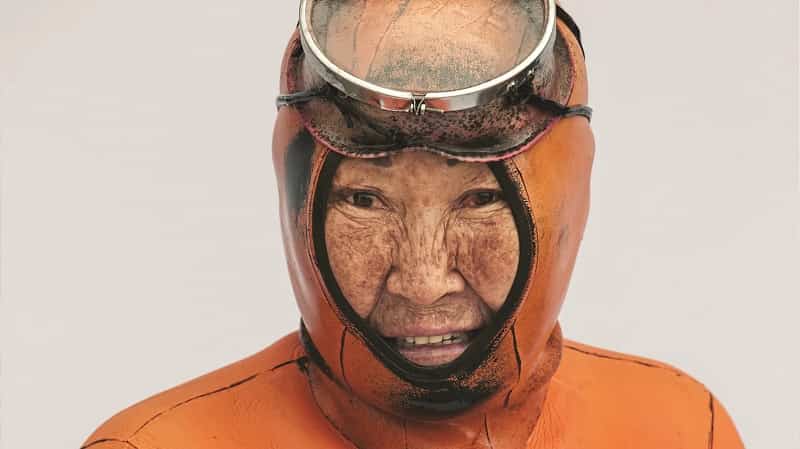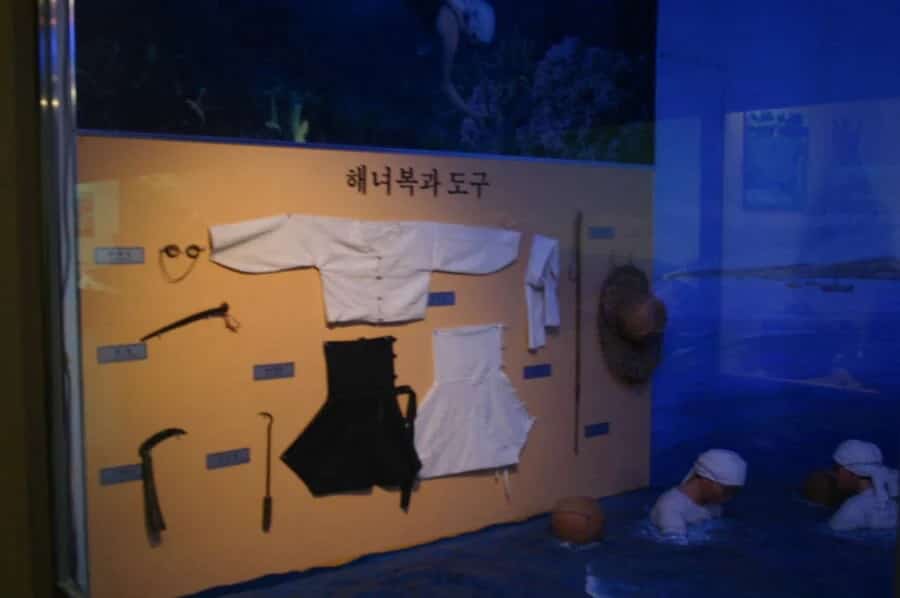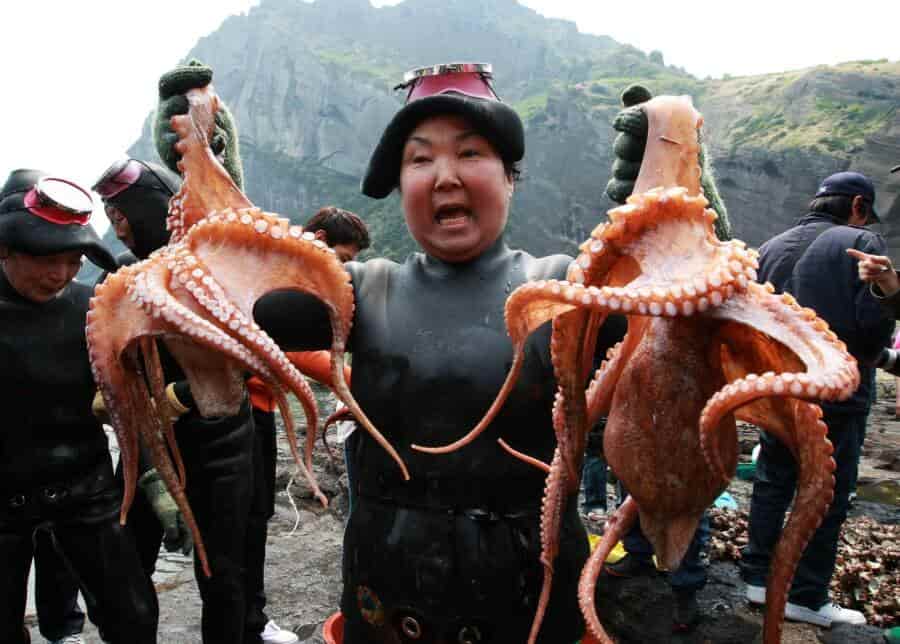The Breathtaking History Of The Haenyeo, South Korea’s ‘Mothers Of The Sea’

The “Haenyeo” or “Women of the Sea” are an extraordinary group of female divers from Jeju Island, South Korea, known for their deep-sea diving skills, resilience, and unique way of life. For centuries, these remarkable women have braved the ocean depths to harvest seafood, embodying strength, cultural heritage, and environmental stewardship. In an era when traditional roles and gender expectations restricted women, the Haenyeo forged a distinctive path, playing a critical role in the local economy and society.
Who Are the Haenyeo?
The Haenyeo are female divers, mostly found on Jeju Island, who dive without any modern equipment. These women, some of whom are well into their 70s or 80s, plunge as deep as 10 to 30 meters underwater, holding their breath for several minutes at a time while collecting marine delicacies like abalone, octopus, sea cucumbers, and seaweed. Unlike most commercial divers who rely on oxygen tanks, the Haenyeo rely on their exceptional lung capacity and intimate knowledge of the sea to harvest their catch sustainably.
Their skill, passed down through generations, is a blend of survival instinct and respect for nature. The Haenyeo tradition began as early as the 17th century and evolved over time into a female-dominated profession, breaking societal norms and establishing their role as providers.

The Art of Breath-Holding
A key aspect of being a Haenyeo is mastering the art of breath-holding, which requires years of practice. From a young age, girls on Jeju Island start learning to hold their breath underwater and train their bodies to endure the cold ocean waters. By the time they become full-fledged Haenyeo, they can hold their breath for over two minutes during each dive.
The sound of their sharp exhalations, known as “sumbi,” is an integral part of the Haenyeo’s diving process. This breathing technique not only helps them conserve energy but also signifies the end of a dive, marking their return to the surface.

A Vanishing Tradition
Once numbering in the tens of thousands, the Haenyeo community has dwindled significantly in recent decades. Industrialization, changes in the economy, and the rise of modern fishing practices have contributed to the decline in younger generations taking up the profession. Today, there are only around 2,500 Haenyeo left, most of whom are elderly.
Despite this, efforts are underway to preserve their legacy. In 2016, UNESCO recognized the Haenyeo as an Intangible Cultural Heritage of Humanity, acknowledging their unique cultural contributions and the need to protect their tradition. There are also educational programs and museums on Jeju Island dedicated to keeping the Haenyeo legacy alive for future generations.
Environmental Stewards
The Haenyeo are not only renowned for their diving skills but also for their deep connection with the environment. Their method of harvesting seafood is sustainable, as they collect only what is necessary and follow strict seasonal guidelines to ensure that marine life can regenerate. This has allowed the waters around Jeju Island to remain relatively abundant with sea life despite years of harvesting.
Their intimate knowledge of the sea’s ecosystems has made them natural environmental stewards. The Haenyeo have a long-standing practice of only taking mature seafood, leaving the younger ones to grow, which ensures that marine populations remain healthy. Their traditional diving methods, relying solely on their bodies and natural tools, have minimal impact on the environment compared to modern fishing techniques.
Empowerment Through Tradition
The Haenyeo defy traditional gender roles in Korean society, where men typically dominate labor-intensive professions. For centuries, these women have not only supported their families financially but also gained social status through their work. In many Haenyeo households, the women were the primary breadwinners, while men often stayed home or engaged in less profitable work. This reversal of gender roles gave the Haenyeo a unique form of independence and empowerment, unusual for women of their time.
In the 1960s and 70s, the Haenyeo were instrumental in supporting South Korea’s economy, earning foreign currency through their seafood exports to Japan and other countries. Their role in economic development and social transformation cemented their place in history as pioneers of women’s rights in Korea.
The Future of the Haenyeo
As the Haenyeo population continues to age, the future of this incredible tradition hangs in the balance. With fewer young women willing to take up the physically demanding work, the Haenyeo are at risk of fading into history. However, the global recognition of their cultural significance, alongside growing interest in eco-tourism and sustainable practices, offers hope for the preservation of their heritage.
Several efforts are underway to encourage the younger generation to reconnect with the sea, both in Korea and internationally. Programs promoting eco-tourism have brought a renewed focus to Jeju Island, where visitors can learn about the Haenyeo’s way of life, experience traditional diving methods, and support sustainable practices. Additionally, diving schools and mentorships with veteran Haenyeo aim to pass on the skills that have been honed over centuries.
The Haenyeo are much more than divers; they are a symbol of resilience, empowerment, and cultural heritage. Their remarkable ability to dive deep into the ocean, armed with nothing but their skill and knowledge of the sea, showcases a rare bond between humanity and nature. As the world continues to evolve, it is crucial to preserve and celebrate the legacy of the Haenyeo, ensuring that their fearless spirit and sustainable practices live on for generations to come.
FAQs About Haenyeo – The Women of the Sea
1. Who are the Haenyeo?
The Haenyeo are female divers from Jeju Island, South Korea, known for their deep-sea diving skills. These women dive without any modern equipment to harvest seafood like abalone, seaweed, octopus, and other marine life, often reaching depths of 10 to 30 meters.
2. What do the Haenyeo dive for?
Haenyeo primarily dive to collect marine delicacies such as abalone, sea urchins, octopus, sea cucumbers, and seaweed, which they harvest sustainably from the ocean floor.
3. Why are the Haenyeo significant?
The Haenyeo represent an important cultural tradition on Jeju Island. They have played a crucial role in the local economy for centuries, and their profession defies traditional gender roles, making them symbols of female empowerment. In 2016, the Haenyeo were recognized by UNESCO as an Intangible Cultural Heritage of Humanity.
4. How do Haenyeo dive without oxygen tanks?
Haenyeo rely on exceptional breath-holding skills and lung capacity. They practice from a young age and can hold their breath underwater for over two minutes. Their diving technique, known as “sumbi,” helps them maximize oxygen and energy while underwater.
5. Are the Haenyeo still active today?
Yes, but their numbers are declining. There are currently around 2,500 active Haenyeo, most of whom are older women. The profession is at risk of disappearing as fewer young women are taking up this physically demanding work.
6. What is the Haenyeo’s approach to sustainability?
The Haenyeo practice sustainable harvesting by following strict seasonal and size-based guidelines. They only collect mature marine life and avoid over-harvesting, allowing marine populations to regenerate and thrive. This makes them natural stewards of the ocean’s ecosystem.
7. How does one become a Haenyeo?
Traditionally, Haenyeo begin their training at a young age, learning to swim and hold their breath. Over time, they practice diving in shallow waters before progressing to greater depths. It takes years of practice and experience to become a full-fledged Haenyeo.
8. What is the future of the Haenyeo tradition?
While the tradition faces challenges due to an aging population and the lack of young divers, efforts are being made to preserve their legacy. UNESCO recognition, eco-tourism initiatives, and educational programs are helping keep the Haenyeo’s cultural heritage alive.
9. How are the Haenyeo different from other divers?
Unlike modern commercial divers who rely on oxygen tanks and diving gear, the Haenyeo dive with minimal equipment, using only a wetsuit, goggles, and a basket. They depend entirely on their breath-holding ability and traditional knowledge of the sea.
10. Can tourists experience Haenyeo culture?
Yes, Jeju Island offers various opportunities for tourists to learn about Haenyeo culture. Visitors can explore museums dedicated to the Haenyeo, watch live diving demonstrations, and even participate in eco-tourism activities that highlight the Haenyeo’s sustainable practices.
